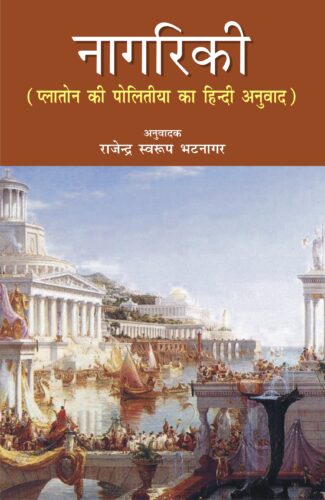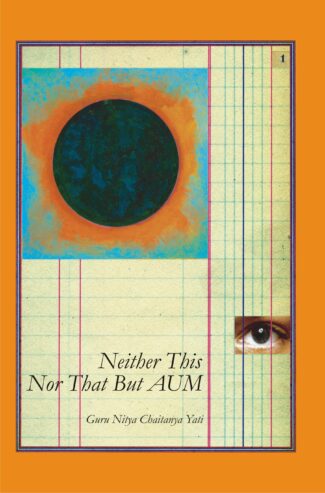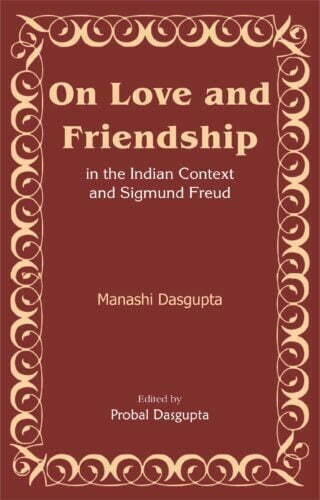Showing 131–140 of 262 results

Setting out a spiritual dialogue between Saiva and Christian mysticism, the book articulates world-views of the mystical traditions of Saiva-Siddhanta, Kashmir Saivism, Meister Eckhart, Hadewijch, Julian of Norwich, St. Ignatius Loyola and of the Eastern Christianity.
If mysticism is hard to define, what is it then? Or, why have mystics often spoken about what they have realized notwithstanding the unspeakability of a spiritual experience? And, yet more significantly, how can a meeting point of different religious traditions be discovered at the mystical level? Focussing on these and other related questions, eminent scholars from varying religious traditions here explore the nature of mystical experience in two of the worlds major traditions: Hinduism and Christianity. Neither a comparative study of religious traditions, nor an attempt to develop an overall mystical theology, the book sets out a spiritual dialogue between Shaiva and Christian mysticism: a dialogue wherein the participants articulate worldviews of the mystical traditions of Shaiva Siddhanta, Kashmir Shaivism, Meister Eckhart, Hadewijch, Julian of Norwich, St. Ignatius Loyola, and of the Eastern Christianity. And, without taking any a priori intellectual position, each author here evolves his/her own tradition-specific perspective on mysticism letting the comparisons, if any, to surface in the dialogue itself. A spiritual dialogue, like the one this multi-author work embodies, holds a key to an insightful understanding between different people, cultures and faiths more specially in todays world riven, as it is, by fundamentalist forces and endless religious conflicts. The book will be a valuable acquisition for the scholars and spiritually interested readers alike.

Nagariki is a Hindi translation of Politeia of Platon (Plato). Usually the subject matter of the book has been taken to be the organization of state or city and it has been thought that Plato is presenting an ideal form of the state or city. But it appears that this kind of discussion has been a way to present the notion of justice and to show how it is different from injustice and what is its role in the life of an individual and the city.
This book Nagariki is a Hindi translation of Politeia of Platon (Plato). A number of translations of this book are available in English entitled the Republic.
In fact the Republic is not the proper translation of Politeia of Platon for Plato did not accept the idea of democracy, on the contrary he had criticized this form of state.
Ordinarily the theme of the book has been taken to be state or the polity of a city. Usually it is understood that Plato is presenting an ideal form of a state. But it seems that the discussion of the forms of state is meant to show what is the notion of ßjusticeû, how is it different from the notion of ßinjusticeû and what significance it has in the context of an individual and the city.
Two things have specially been taken care of in this translation. First, that it brings us nearer the Hellenic or Greek atmosphere. Second, the dialogue has been presented in such a way that the conversation is taking place among the people who are intimate and familiar with each other. This translation aims to convey the notion of virtue and its relation to justice. In Politeia the discussion on virtue has been conducted in the context of both Þ individual as well as the city. As compared to other dialogues of Plato, the notion of virtue is highlighted in this dialogue in a more significant way.
The presentation of this translation has also been felt necessary because other translations in Hindi are not easily available.

This bilingual volume talks about the varied problems of philosophy in terms of definition, philosophical thinking, and the relation between thought and language. Problems that confront to a reflective mind need to be analysed, clarified and resolved. The book fulfils that task.
“Nature of Philosophy is a bilingual volume in English and Hindi. It talks about the varied problems of philosophy in terms of definition, philosophical thinking, and the relation between philosophy and language. Akin to any other discipline, in philosophy too, problems concerning it need to be analysed, clarified and resolved for a proper understanding and, it is the ultimate goal of this book. Herein, problems are made clear by analysis, questioning and critical method. The clarity thus achieved prompts us for philosophical reflection to the extent of removal of the problem and a discriminate understanding of the concept. It emphatically states that since philosophical problems are the objects of reflection, philosophical reflections aim at conceptual clarity by analysis, interpretation and wisdom. The question of any sort of risk against philosophy does not hold any merit. It is because philosophy fulfils human aspirations and truth of reasoning to confront with and reflect on problems to remove them. This book offers a thumbnail sketch of the varied problems of philosophy and proffers solutions to them in an efficacious manner.”
“The philosophies in India evolved in the process of mutual rebuttal and confirmation. The Carvaka philosophy is very unique and well-marked among Indian philosophies as it is the only philosophy in India which corroborates materialism. The twenty-first century is the century of materialism. This philosophy known as Lokayata as well as Anviksiki is a logical system. In order to qualify to be a logical system it is necessary that this philosophy refutes the concepts of other philosophies and establishes its own concepts both on logical grounds. The philosophies such as Nyaya, Vaisesika, Samkhya, Jaina and Bauddha do the same; they refute the position of other philosophies on logical grounds and establish their own philosophy on the logical basis. But we observe this deficiency in the Carvaka philosophy as this philosophy is not developed in tune with the development of other philosophies for whatsoever reasons. Everywhere this philosophy appears only as a purvapaksa not siddhanta paksa. In this book there are redressals of the criticism of Carvaka philosophy by the celebrated philosophers like Dharmakirti, Santaraksita, Kamalasila, Udayanacarya and Visvanatha Nyayapancanana as well as their rebuttal from the Carvaka point of view. This book is a reaffirmation of the Carvaka philosophy on the basis of Carvaka concepts and logical grounds. This is an invitation to the philosophers for a dialogue. “
This book represents the philosophy of language in Navya-Nyaya, based upon an analysis of the “Verbal Suffix Chapter” (Akhyatavada) of Gangesha’s Tattvacintamani. Since this chapter elaborates what kind of verbal understanding is generated and discusses related issues, the book demonstrates the main features of that philosophy of language and serves as a good introduction to that. The analysis mainly deals with Gangesha, but in some cases it refers to Raghunatha. Since the book is an attempt to pursue philological exactness and philosophical analysis, it is hoped to interest not only Sanskrit scholars, but also philosophers in general.
The book consists of four lectures. Lecture I clarifies Gangesha’s view of the meaning of the suffixes of a finite verb, which (meaning) is greatly disputed among the Navya-Nyaya philosophers, the Mimamsa philosophers, and the Grammarians. Lecture II investigates how Gangesha determines the meaning of words and illustrates that his method bears upon ontological categories of Vaisheshika. Lecture III deals with Gangesha’s “Five Definitions of Invariable Concomitance Section” (Vyaptipancaka) and elucidates the relation between meaning and the logical structure of the definitions. The lecture also provides diagrams as a tool to represent the structure. Lecture IV explains the realistic standpoint of Navya-Nyaya by clarifying the concept of the counterpositive (pratiyogin) of absence (abhava), or a thing whose existence is negated, focusing on empty terms or non-factual expressions such as “a round triangle”, “the present King of France”, “a rabbit’s horn”, and so forth. The lecture delineates how Udayana, Gangesha, and Raghunatha observed and, as the time passed, did realism thoroughly in language analysis.

Are you faced with negative emotions such as jealousy, anger or pride? The only way to overcome these is by following the teachings of a Guru. Here is a beautiful book containing 108 teachings of a Sadguru which will lead you on the divine path.
The Nectar Words of My Master is a mala of 108 teachings, offered by an enlightened Master, that can be used as a day-by-day practical guide for spirituality. It deals with the trials of the human soul, when faced with negative emotions such as jealousy, anger or pride, and proposes a path towards the Light based on divine qualities and spiritual practice. Sri Sri Sadguru Swami Advaitananda Paramahansa always conveys eternal truth through simple speech, whenever He is being questioned by sincere seekers.

This volume, written originally in Malayalam, embodies a stimulating mystic composition, Atmopadesa Satakam (One Hundred Verses of Self-Instruction) unfolding magnificently the relationship of man with the cosmos.
The volume embodies a highly stimulating mystic composition : Atmopadesha Shatakam, literally One Hundred Verses of Self-Instruction, unfolding magnificently the relationship of man with cosmos. Written, originally in Malayalam, by Narayana Guru: a mystic, philosopher, visionary, and poet of yester-years, these verses are like the eternal beacon showing us the way to know the meaning of life through Self-awareness. The title, Neither This Nor That But . . . Aum, is derived from the last: the hundredth, verse of Atmopadesha Shatakam. The 99 verses that precede it clearly explain the This and That in which our lives become entangled. But as we progress from verse to verse, we find unveiled before us the untold magic of the silent Word: the secret of supreme realization. Guru Nitya, who is a key figure in the spiritual hierarchy of Narayana Guru, here reproduces all these ever-enlightening verses of Atmopadesha Shatakam : each in its Roman transliteration, together with its English translation, meaning and, besides these, also the guidelines for meditation. Each verse (of Atmopadesha Satakam), observes Edda Walker in her Foreword, is as perfect and complete as a rare pearl, and these perfect pearls are linked by the golden thread of pure essence, which is my essence, your essence, our inheritance.
Bhartrhari’s three unique compositions – Nitisatakam, Srngarasatakam and Vairagyasatakam – have been relevant for the last 2,000 years and above for their exclusively terse and epigrammatic character, and universally applicable teachings. The Nitisataka, although succinct and concise, is pregnant with the perpetual and everlasting doctrines, resulted from diverse experiences of life.
Although it has hundreds of printed editions available with commentaries and translations published in many parts of the globe, still this edition has been prepared along with recently discovered Kasmiri Sarada text, supplemented by critical notes on variant readings found in a Sarada manuscript, for the very first time in last 400 years, i.e. ever since the printing editions came into existence.
Most commonly accepted verses of the Nitisataka have been included in this edition, making a total of 111 verses, which is enriched with authentic translation and purports in Hindi and English.

Authored in twentieth century by Mahamahopadhyaya Phanibhushan Tarkavagish on the Nyaya-Sutras and Vatsyayana’s Nyayabhashya, this Bengali commentary is a very important treatise that integrates internal development of Nyaya philosophy and its all minute points. The Bengali commentary, rendered first time in Hindi, on the Lakshanasutras shaping the basic structure of Nyaya philosophy, is being produced here.
In Indian tradition, the Nyayashastra has been stated to be the central organ of perception and for the matter of that it stands out as the model of righteousness and chief stay of the ideas. It would not be out of place to remark that Nyaya, as a coherent branch of philosophy, has provided meaning, structure and form to the Indian thought process much in the same way as Aristotle has canonized Western speculation around an organized philosophic principle.
Since its inception in Gautama and till Gangeshopadhyaya and even otherwise beyond, the Nyayashastra has precisely retained its hold over speculation and intellectional conditions by bringing Sutra, Bhasya, Vritti and Prakarana to the contemplation of reason. Erudites such as Phanibhushan Tarkavagish, Ganganath Jha, Goipinath Kaviraj and Anantalal Thakur were amongst the masters of this tradition of thought in the nineteenth and twentieth centuries. Of these, the Nyaya principles embodied upon Tarkavagish’s contemplations remain one of the foundations of the whole system. His Nyaya-Darshana, originally written in Bangla, whose Hindi rendering on Lakshanasutra of Nyaya-Darshana has been produced in this volume, is one of the brilliant texts illustrating Nyaya-Darshana in a formulaic manner.
The merit of this text that explains and illustrates the basic structure of Nyaya in its totality and fullness is mainly underlain in the fact that it enables the readers to become one and all with its premises just as an able teacher facilitates a disciple to recreate knowledge into conviction. For the similar reasons, the present text that traces the growth and development of an analytical mode of philosophic learning over a period of 2,000 years is certainly a well- worth collection.

This book revolves around the insight that exchanging feelings and thoughts with friends, in the light-hearted style of open conversations but with the seriousness that only informality can underwrite, is a uniquely valuable mode of exploring questions; it alone nurtures the growth of personal accountability.
This book studies the constitutive role of friendship as a factor contributing to the environment required for serious discussion between accountable adults to take place. The context for this study is a vision that identifies an anti-hierarchical imagination as a prerequisite for democracy and seeks to fashion an institutional format based on friendship, outside patriarchy. This India-focused study, which draws on philosophy, literary/historical analysis, psychological theory and fieldwork, revolves around the insight that exchanging feelings and thoughts with friends, in the light-hearted style of open conversations but with the seriousness that only informality can underwrite, is a uniquely valuable mode of exploring questions; it alone nurtures the growth of personal accountability. The capabilities of this mode as a site for the development of such maturity, the author suggests, go beyond what the institutional structures of academia and other public spaces can possibly support, given the masks that formal structures force on their participants.
The author argues that friendship is a metaproject, a crucible within which projects are incubated; this structural fact makes it difficult to initiate friendships if one is a very young child, not yet able to understand what projects are, or a very old adult, no longer willing to launch any. It is in the context of that argument that the author considers the Freudian view that all acts of friendship are nothing but sublimated manifestations of eros; she suggests that such a claim conflates issues of origin with issues of validity and ignores the metaproject character of friendship bonds.
| There are no products |